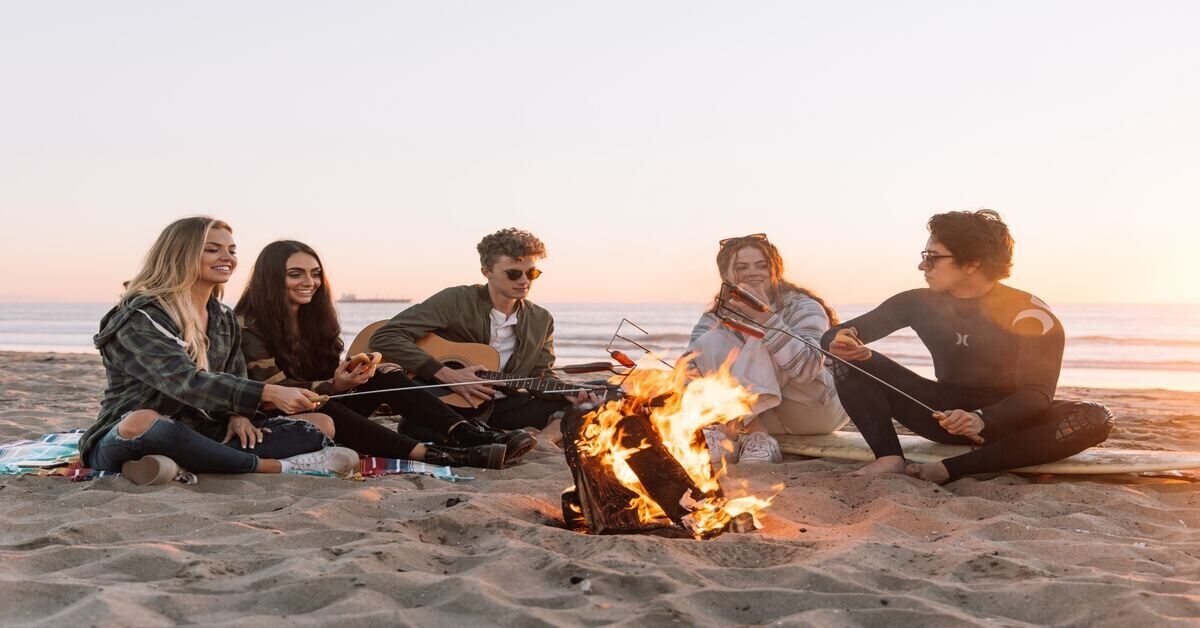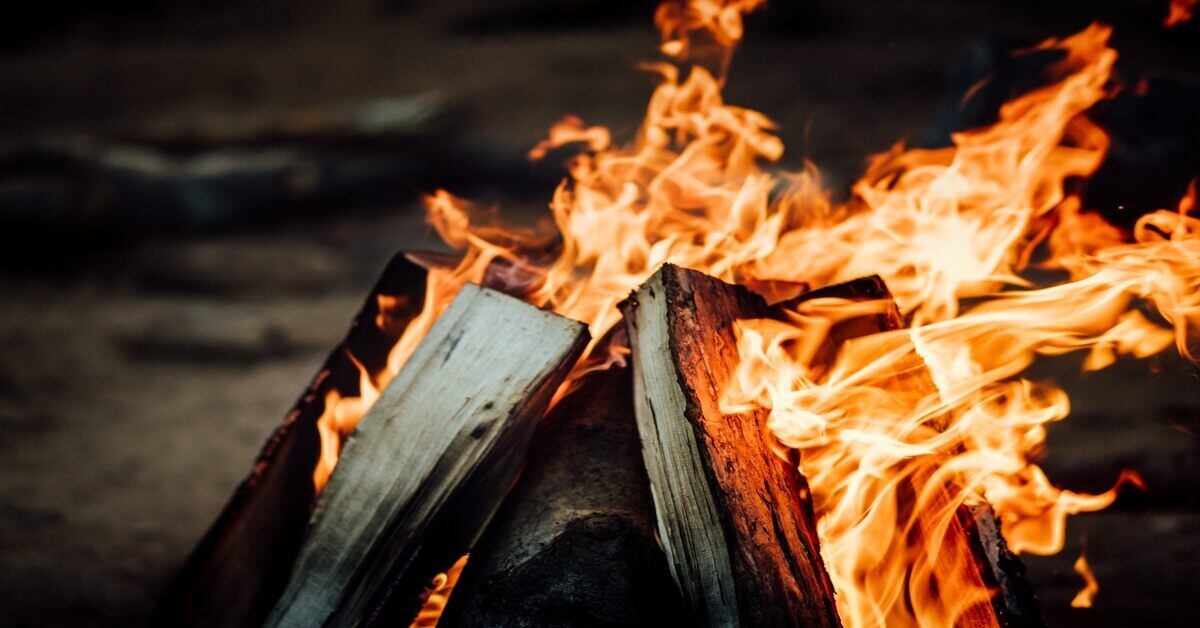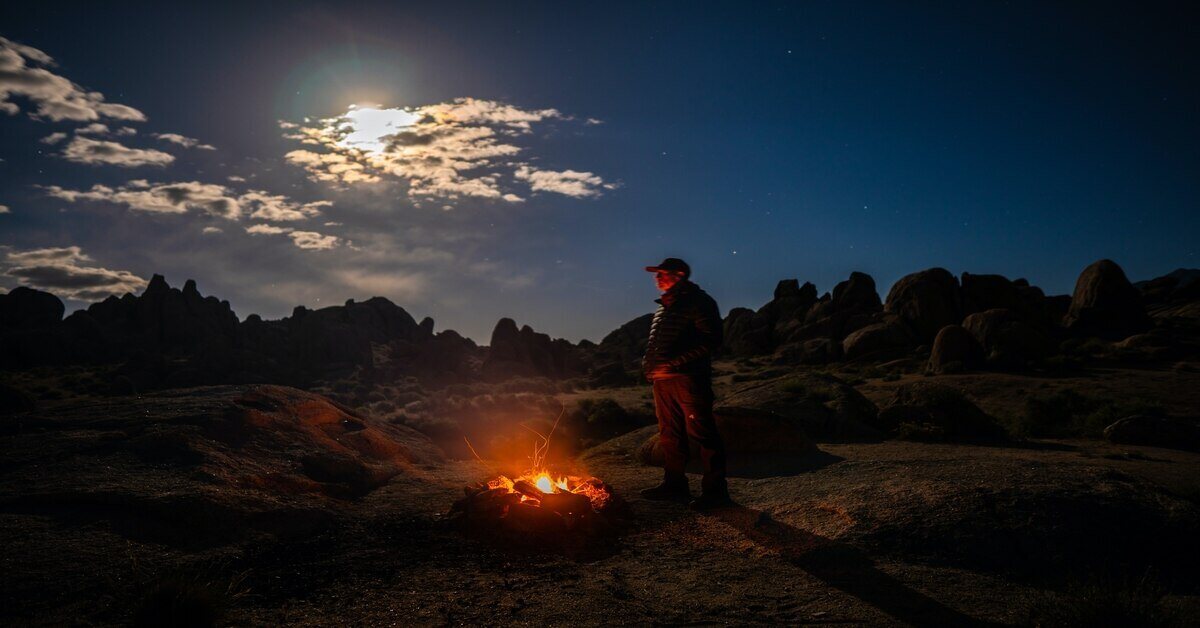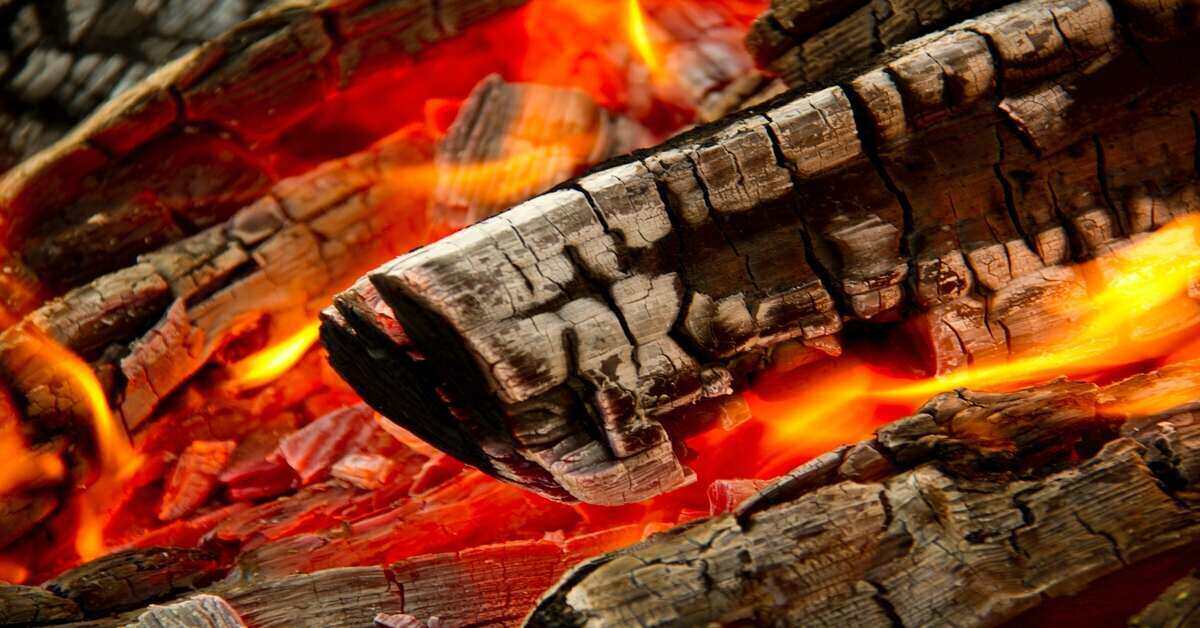You have decided to go for a hike in the woods or sit outside on a calm evening. To bring your experience into reality, you need to do something simple: you light a fire! Maybe not the best idea ever, but sometimes it’s necessary when it comes to survival situations. You may be on a long trip and need to find food, or you might be lost in the woods. Don’t have matches? Use what’s available. In this post, we will discuss how to start a fire with sticks.
Why is starting a fire with sticks important?
In the case of a natural disaster, not having fire could mean your death. It’s one of the first things you need to survive and can help in many different ways, like cooking or boiling water for purification. You also can use it to keep warm and dry; this is very important when looking for shelter; otherwise, hypothermia might set in. You can also scare away animals, keep predators at bay, or signal for help when lost.
Getting prepared: What do I need?
It’s always a good idea to get ready before you start. Make sure your surroundings are fire-safe, and nothing is flammable or will catch fire easily. Douse any open flames and remove things like lighters or matches from the area, as they could be hazardous if not used correctly. Also, make sure there’s nothing nearby that can be used as a part of your fire, like leaves or grass.
Generally, you’re going to need two things: tinder and kindling. Tinder is an extremely dry and easily ignitable material that can be used to start your fire. Kindling is the pieces of wood that catch on after the burning embers of tinder have fallen onto them.
Tinder: The best tinder material is dry, light, and easily ignitable. What is easily flammable? A piece of fabric like a cotton garment or a paper bag will do the trick, but you can also use cardboard or thin wood. You can even use sawdust from freshly cut wood (if it’s allowed to burn in your area) or some alcohol-based hand sanitizer with a non-flammable base.
Kindling: These are the small pieces of wood placed on top of your burning tinder and begin to catch fire. You can use all kinds of small bits of twigs, smaller branches, or even entire fallen down trees. To start the fire, you will need approximately ten times as much tinder as kindling.
Related: How to clean a tent with mold
How to start a fire with sticks: Steps
1: Place a pile of tinder on the ground and stack up some kindling on top of that. Why do we need to pile it up like this? Because of the way fire spreads. It is recommended to have a triangle shape with one side as your tinder and the other three being kindling. Follow these steps:
2: Light a match/lighter or use some embers from a previous fire and touch the tinder.
3: Wait a few seconds for the flame to spread.
4: With the help of your kindling, blow on the flames until they take hold.
5: Let it burn! Please don’t put any more wood onto it too quickly because you could smother the flame and have to start the whole thing over again.

How long does it take to start a fire with sticks
How long does it take to start a fire with sticks? It depends on the weather, humidity, how dry the wood is, and how many people are helping to start the fire. If you rub two sticks together for ten minutes without anything catching alight – keep trying! The first embers do not catch flame immediately. Keep at it, and eventually, you will get a little flame. Do not give up – it is worth the wait.
In the situation of a survival emergency, it’s good to have some firelighters or pocket matches in addition. Matches and lighter are more reliable than rubbing two sticks for hours to start a fire. Even so, the wood is rarely 100% dry, as you might expect.
You will need at least three different ways of starting a fire in case one of them fails.
Types of wood you can use to start a fire
The easiest way to explain how to start a fire with sticks is for people who have never tried it before. Here are the three types of woods that are most effective at creating a fire:
- Dry Wood – this type of wood is most effective to start a fire because it can burn longer and stronger than the other two types. Hardwoods such as oak, ash, maple, birch, and hickory are good examples of dry wood.
- Softwood – this type of wood is easily breaks and usually contains a lot of resin, making it burn longer if you can manage to get the fire going. Pine, cedar, hemlock are good examples of softwood.
- Average Wood – this is what most people have in their backyards. It’s hard to break and much harder to start a fire with, but the flame will not last as long as dry wood or softwood. Average woods include oak, poplar, elm, pine, and cedar.
How best to use your kindling to get a fire started
You can use any of the three types of wood to start a fire, but the best way is with dry wood. Dry woods are hardwoods such as oak and maple – they burn the hottest and longest. Softwoods do not contain as much resin, so it doesn’t burn as hot, but they provide longer flames. Average kindling woods are also helpful in starting fires but use this wood first if your dry woods have run out.
How to make and use flint strikers
This is the simplest way to start a fire with sticks. This is how you do it:
1) You will need a thick piece of bark from a tree (about 2 cm in thickness) and a flint striker.
2) Find an area where the bark is sandy and smooth – this will make it easier to scrape off.
3) With your knife, cut a small strip of bark about 1-2 inches wide. Scrape away some of the inner bark until you see natural fibers underneath. You want to remove enough of the inner bark to expose as much of the natural fibers as possible.
4) Put your piece of bark on a flat surface and place it under one foot. Take your flint striker in your other hand so that you can scrape down towards yourself with the rock edge of your flint striker on the natural fibers, apply some pressure.
5) When the flint hits a natural fiber, scrape even harder and don’t move the flint striker away. If you do this correctly, there will be a little bit of smoke from the lighter fibers. The goal is to get enough heat and friction to create an ember that can eventually become a flame.

Ways to keep your fire going and maintain the flame for as long as possible
We know that starting a fire with two sticks is the easiest way to start a fire, but it takes time to build up a campfire before you can sit back and enjoy the warmth. Experts recommend adding a few more sticks and logs to keep the fire burning longer, even if it needs some maintenance now and then to keep the flame going strong.
With your main log serving as a foundation for the rest of your campfire, carefully pile smaller slivers of wood on top. What’s happening here? Since you have one large log, you’ll have a larger flame as well. But once you add more logs on top of it, the fire will spread and slow down.
By rapidly chopping up your smaller sticks into slivers — or even using small twigs that are still connected to branches — you allow for oxygen to get in between the wood pieces so that a continuous flow of air can get to the burning pieces. It’s not enough free space for the fire to spread, but it is just enough so that oxygen will keep reaching out to all your wood bits and burn them into ashes quickly. This will save you from having to make more effort of constantly adding new logs into the mix.
Large fires take up more time and resources. So while a few tips for maintaining your fire are essential, you don’t necessarily have to do all the work of cutting up logs into smaller pieces unless you know that it will make a difference. But if you’re using regular-sized logs, it can’t hurt to chop them into smaller pieces because this will help the fire burn faster and with a more efficient flame.
Related: Rock climbing for beginners
How to start a fire with two sticks
This method involves using two twigs in the shape of a “V” to create a natural tinder bundle. Basically, all you need is one hand and two sticks about 4-6 inches long. To make this work, place your hand on top of the tip of one stick, and then place the bottom of another stick on top of your palm.

Now, create a small “V” with two fresh sticks that’s approximately four to six inches high by weaving them around each other at their tops. You can do this in whatever direction you feel like – horizontally or vertically – as long as they’re woven together like a closed tipi. This part of the process will take up to ten minutes, but it’s work that takes patience. The key is getting as many sticks woven in there as possible without breaking them – so if one breaks, try again with a new one!
Ensure the sticks are dry!
You want these sticks to be as dry as possible. Once you’ve created your “V,” place it next to a pile of shavings or dry twigs. The fire will draw in these extra materials and use them to start a fire on its own. And without having to use any matches!
Next, place the base of the “V” into the middle of this collected kindling and gently start to blow on top of the “V” to help set it alight. The fire will burn through the natural kindling and spread outwards – just like a real campfire!
After around ten minutes, you’ll find that your little bundle of sticks has grown into an amazing fire! You can now place larger branches onto the top of your fire and start cooking.
After you feel like the fire is burning safely, it’s a good idea to extinguish it properly by covering the top with damp sand or soil and pouring water over all sides. But don’t worry. The next time you want to use your sticks to start a campfire, repeat these steps!
Other things to use instead of sticks
Paper, cardboard, dryer lint, and leaves/grass clippings can all start a fire. How? Well, we’ll have you know that all of these materials are flammable. By getting them close enough to an open flame, they will eventually catch fire!
The easiest way to do this would be to use the cardboard from a box or a piece of paper. You could even try using dryer lint if you are in a pinch!
One can use wet leaves and grass clippings, but they will take longer as they have to be dried out before applying a flame to them. You can do this by laying them out to dry in the sun or wrapping a bunch of them together tightly and putting it in an empty can. If you’re desperate enough, try using wet leaves or grass clippings!
This is how I would do it: take a small piece of paper and hold on to one end with your index finger. With your other hand, hold onto the other end of the paper using your thumb and index finger. Have a lit match or lighter ready (or flint and steel, if you have it) to light the bottom side of the paper that is touching your fingers.
How long does it take?: – A small piece of paper will catch fire in less than 5 seconds. Larger pieces of paper, like a small box, will take longer. But I’ve heard that it only takes about 20-30 seconds to catch fire using cardboard.
Type of tree to start a fire with
Cutting down trees – Now you might be wondering: Which type of tree should I cut down? Aren’t they all the same? Isn’t one type of wood better than another?
ANSWER: – You are correct! All types of trees are the same in that they all have about the same amount of flammable materials. And no, one type of wood is not better than another; it just depends on what you’re using the fire for!
Willow: – It is very easy to get a fire started with. The wood is very soft, so it breaks apart easily and quickly catches fires! But keep in mind this type of wood burns down fast. So if you are using a fire to roast marshmallows or burn small branches off of other trees, use willow!
Oak: – Is more challenging to get started with than willows. Oak is dry and hardwood, so it takes longer to catch fire. But once it’s on fire, oak burns for a very long time! If you’re making a campfire where you will be cooking dinner or keeping yourself warm throughout the night, use this type of wood!
Maple: – Burns very quickly, so I would not recommend using it to keep warm or for cooking. However, if you are making a fire as a signal (like I will be in the following example), then maple is perfect!
Tips for safety when starting fires in general
A fire can provide warmth, light and help you cooking during emergencies. But – as we all know – fire can also be dangerous. There are, however, some basic tips to follow to make sure it doesn’t become too difficult.

To start with: A big part of making a good campfire includes preparing your site. For best results, you want to have a flat surface. However, if this is not possible, be sure to remove all the stones and twigs from your area that could catch fire by accident and start a forest fire. You can do this rather quickly using just your hands.
It’s also important that the ground is somewhat damp – especially if you are doing this in the hot summer months. The fire will drink a lot of water, so there should be enough ground to keep it going strong.
When building your campfire, make sure it is large enough to fit all the things you want to cook on top of it and still leave some space for air to circulate. The more heat the fire can give off, the faster it will dry your clothes and food.
The most significant part of building a good campfire is collecting sufficient fuel. You should gather enough material for at least 30-40 minutes of burning time. This depends on how much wood you are using, its size, and how hot it burns.
Important: After you’ve seen that your fire has burned down to the point where it is safe to go to sleep, be sure to put the fire out properly. Make use of some damp leaves or sand and thoroughly cover all parts of the fire so no sparks can fly away into the woods. This will help prevent forest fires from starting – which nobody wants! This video demonstrates putting out a fire properly.
Hopefully, this guide has provided enough tips on how to start a fire with sticks. Have fun exploring these techniques, and don’t forget your safety equipment like water purification tablets, first aid kits, sunscreen, and bug spray!

